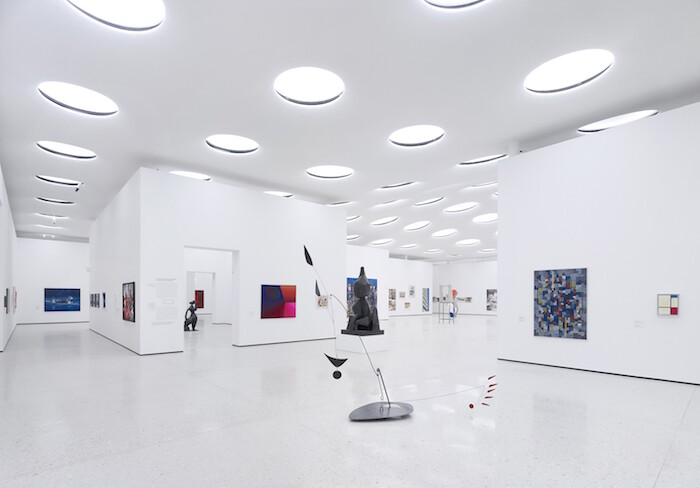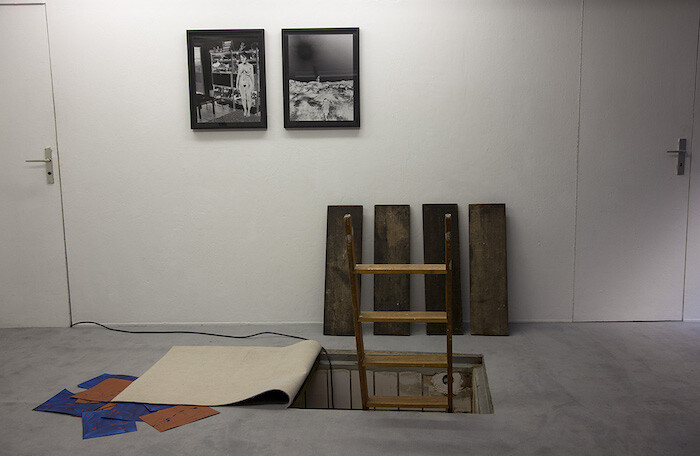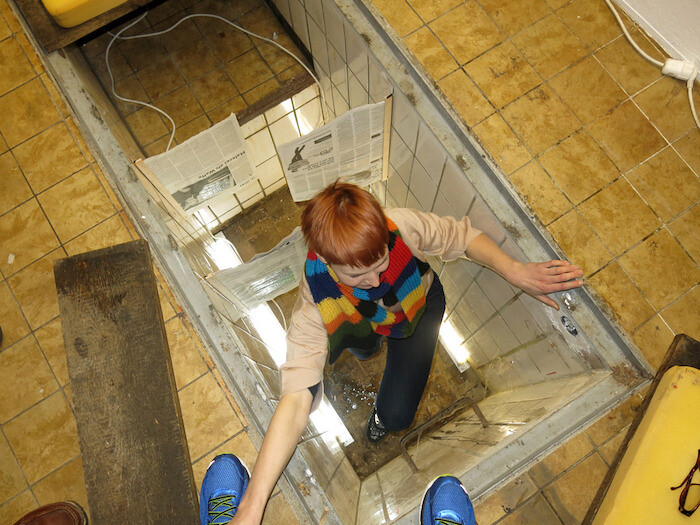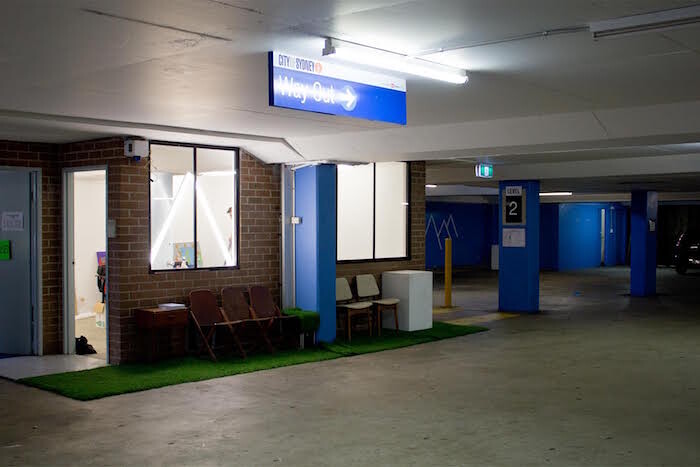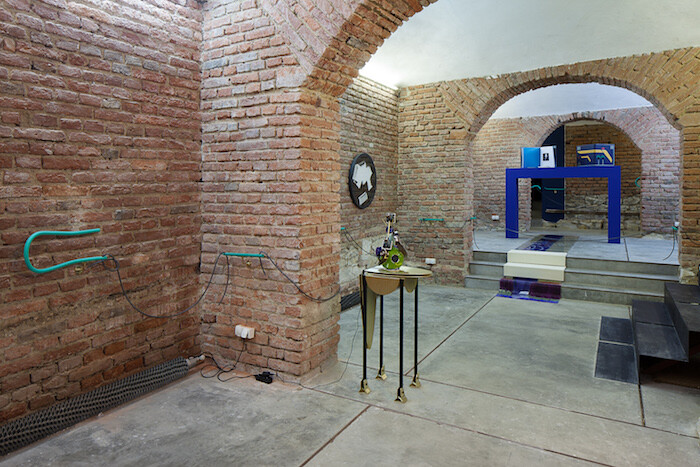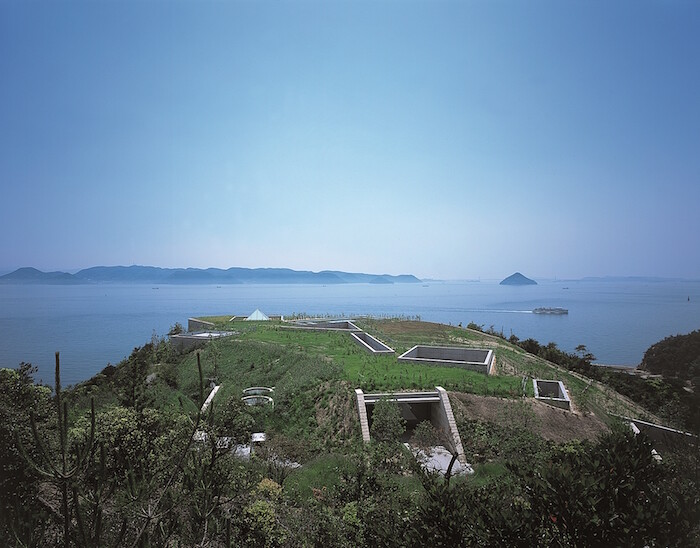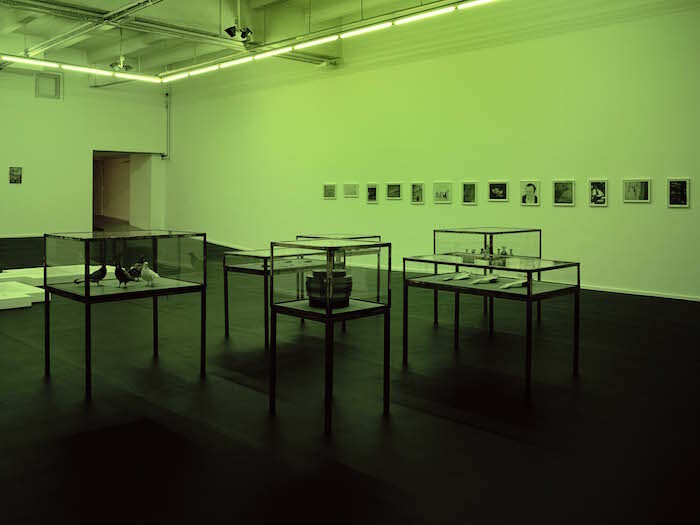The fourth feature of Spaces goes underground.
There is a popular conspiracy theory, supported by shady photographs, that the Earth is hollow. The idea traces back through various ancient mythologies to modern times, when visionaries such as John Cleves Symmes, Jr. and Marshall Gardner elaborated speculative hypotheses about the content of the space below ground, including the possibility of it hosting another civilization that lives in the center of the earth. Further conspiracies hold that Hitler escaped by submarine to Antarctica, where a subterranean passage allowed him access to the Earth’s interior. The underground clearly exerts a peculiar hold over our imagination.
In the context of contemporary art, the experience of the underground is generally limited to climbing down a narrow flight of stairs to visit an exhibition, as many commercial galleries have extended their display surfaces by exploiting otherwise empty basements to which access is often convoluted and humidity high, meaning they aren’t appropriate for the storage of artworks. Appearing first as a handicap, the absence of windows can actually be an asset, as it offers complete control over lighting and allows for the entire surface of the walls to be at the disposal of the gallery, the underground space offering itself as the perfect black or white cube. Sometimes it becomes the gallery’s main exhibition site while those areas with natural light are used for offices, not only improving workplace performance but also leading to those “aquariums” where the gallery staff works in a vitrine and is observed by passersby on the street, as in the cases of Galerie Balice Hertling and New Galerie in Paris.
In an urban context, garages and parking lots are often situated below ground and are preyed upon by galleries, artist-run initiatives, and temporary venues for the functional reasons mentioned above. Nevertheless, some initiatives seem to have sprouted and taken root in the specificity of an ecosystem, corresponding with the particular narratives of a neighborhood or a city. Until recently, Chert Gallery in Berlin was located in a former car repair shop that had holes in the ground. In 2012 David Horvitz founded a gallery in one such hole underneath the floorboards. Called Porcino, it hosted projects corresponding with the gallery’s program, like a mushroom in symbiosis with its host tree.1 In Paris, the artist-run initiative -1 (moins un) is located in the car park below a residential building, not far from several sites targeted during last November’s Paris attacks. In what seems now a strange foreboding, in 2014 the Brussels-based collective The Ister invited—for the second iteration of their “Fortune” project—the Berlin collective Dingum to fill the basement with restaurant tables covered with white cloths, where guests sat and drank wine, inverting the paradigmatic Parisian public space of the terrace in a space that remains invisible from the outside. Sydney’s Alaska Projects started their activity in 2011 at Level -2 of a car park, managing to organize exhibitions and events from a five-by-five-meter white box over two parking spots. Alaska Projects later found other spaces for studios and parallel projects, becoming an important supporter of emerging artists in the city, where it also stood out as one of the only free spaces in which artists could make exhibitions—it is standard in Australia for artists to pay to show in noncommercial or non-institutional spaces.
Galleries located in former industrial buildings easily end up having a generic appearance despite the fact that architectural structures are often retained to give character to the space, as so many art spaces invest in such conversions. This is particularly visible in older underground spaces, as they call to mind the idea of the cave. Hidden from the sun, they conjure an atmosphere of the occult and convey the imaginary of the hollow Earth. These are also places where the remains of history are retained; providing exhibitions with a certain site-specificity, like archaeological sites of the present. This is particularly the case with cinema. In his 1971 text “A Cinematic Atopia,”2 Robert Smithson reflects on the condition of the moviegoer and observes that “after the ‘structural film’ there is the sprawl of entropy,” which leads him to the ultimate desire to construct a cinema in a cave. The undergrounds of the Palais de Tokyo and the Tanks at Tate Modern are exemplary of this. In 2013 I had the pleasure of creating this kind of display by installing Pauline Curnier Jardin’s video Grotta Profonda (2011)—about a mystical revelation in a cave—in the basement of Nettie Horn Gallery in London. Galerie Marcelle Alix in Paris often presents film installations in its underground space, shaped like a grotto and furnished with chairs like those in a cinema.
The site-specificity of the underground space is also a matter of interest for architects. During the restoration of the building that hosts the FUTURA Center for Contemporary Art in Prague, founder and architect Alberto Di Stefano uncovered the old structures of the edifice and reconnected its different parts in unexpected ways. Moving from white to brick walls, it seems like the gallery gradually dissolves as one moves further underground. Sometimes radical projects that explore the possibilities of underground structures emerge out of the need to deal with spatial or environmental constraints, as in the case of the new extension of Frankfurt’s Städel Museum—designed by Schneider + Schumacher, it reshapes the museum’s garden as a field of circular skylights onto a vast underground space—or the Chichu Art Museum in Naoshima, constructed directly into a hill as not to impact on the scenery of the Seto Inland Sea.
The difficulties of the underground space—with regards to the wellbeing of the gallery’s staff or the limiting conditions for exhibitions—come from the fact that these places were rarely designed for human habitation. Thus some of the most durable underground art spaces are actually part of an institution that is mostly located above ground, and are in fact semi-underground and provided with windows. The Crédac art centre in Ivry, just outside of Paris, used to be located beneath a beautiful brutalist complex. Its program considered this site-specificity, as in the exhibition “Mental Archeology” (2010), where the works of Matti Braun, Thea Djordjadze, and Jean-Luc Moulène were presented as different approaches to archeology as mental process. Five years ago, it moved to a new location in a historic factory, a glass box overlooking the city, which stimulates new responses to the site.
The conversion of obsolete functional buildings, in line with an urban politics of sustainability, bears certain responsibilities. The proliferation of private collections investing in former bunkers, such as the Sammlung Boros in Berlin or The Feuerle Collection—also in Berlin, and one of the designated spaces for the upcoming Berlin Biennale—raises questions about the politics of these institutions and their duty towards history. When a former military facility is preserved as a monument, it not only exhibits its architecture but also its disuse, which fosters the work of memory. The artworks presented there may be exquisite, may be political, but they will nevertheless take the space of a necessary emptiness.
In April 2016 Chert Gallery relocated to a new venue on Ritterstrasse, accompanied by Porcino. David Horvitz’s “Ja” is showing at Chert to June 11, while Porcino hosts painter Marley Freeman.
“A Cinematic Atopia” was originally published in Artforum, September 1971: 53-55.

